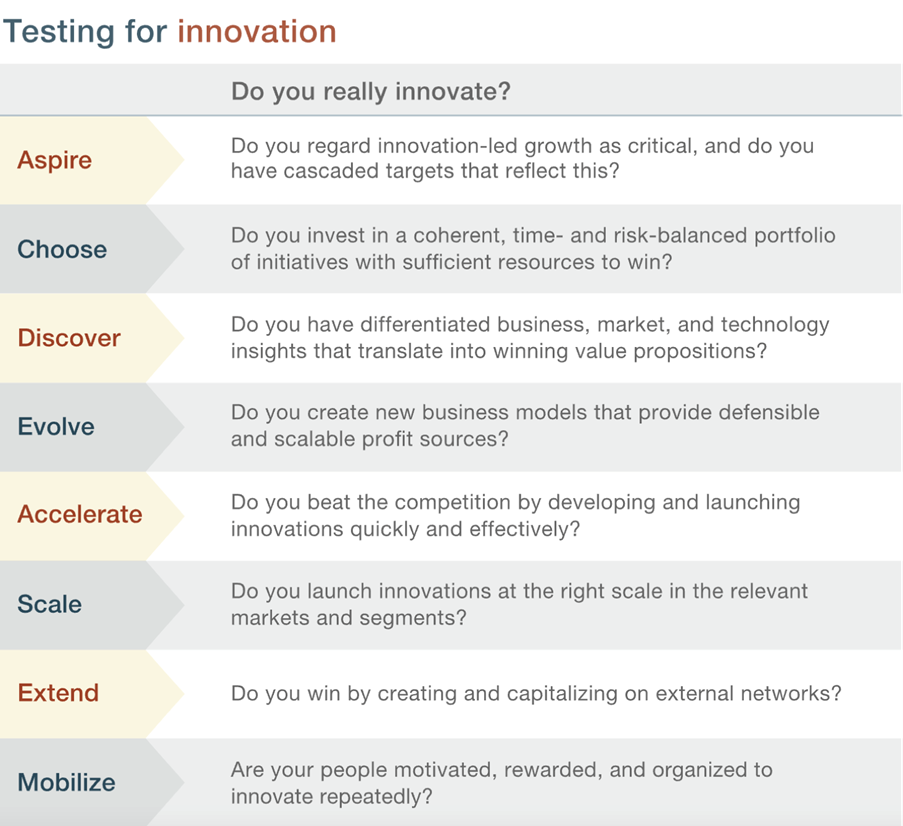
When it comes to creating a winning, market-leading product, your customer has to be at the heart of every aspect of what you develop. It’s important to create something that adds value or solves a specific problem at scale. It’s also important that you create a product that’s unique in its capability to set you apart from the competition.
A lot of organisations see a competitor develop a successful product and then look to develop something similar to capture some of that market share. But why not go all-in and work to develop a product that addresses the same customer needs but does it better?
Why not do everything you need to do to differentiate your product, and not just for the sake of being different but to make it more customer-centric?
Ask yourself if your competitor’s product is the best kind of solution or is there something you could do with your offering to make it a cut above.
To start, let’s look at where the problems can originate.
Why do some companies lack differentiation in their products and services?
If you’re struggling to differentiate your product with meaning it could be down to a variety of potential issues.
Copycat approach: When you choose to focus on copying what your competitors are doing instead of focusing on creating unique solutions. This results in products that lack differentiation by nature and they can subsequently fail to stand out in the market.
Limited innovation: You may not be investing enough resources into innovation. This often leads to underwhelming products that offer few or no unique features. In this scenario a product can struggle to attract enough engaged users and not gain enough traction in the market as a result.
Cost-cutting measures: If you’re too focused on cutting costs you run the risk of taking harmful shortcuts during your product development phase. Again this can lead to a product that lacks any uniqueness.
Lack of market research: Without conducting proper market research you’re not going to fully understand your target audience’s needs and preferences. It’s vital that you don’t pay lip service to customer centricity. Instead make your target audience the centre of all that you do and you’ve much more chance of creating a product that stands out as something the market wants. Quality UX research doesn’t just allow you to differentiate and create a great product, it can also bring new opportunities for innovation to the table.
Inadequate branding and marketing: Even if your product has unique features and you’ve effectively researched the market, if you don’t market it effectively you’re not going to attract as many new users. Effective branding backed up by a strong, unique marketing strategy will help your product stand out, especially in competitive markets.
A lot of these potential issues relate to a lack of investment in the preparation phase of product development. Ask yourself if you’ve paid enough attention to research, exploring innovation opportunities, and your product development process. Then turn your attention to your branding and marketing to see where you’re falling short against the competition.
To scrutinise how innovative you really are, here’s a good model to look at from Mckinsey.
Source: Mckinsey

Strategies for product innovation and differentiation
Let’s look closely at the ‘discover’ element mentioned above to uncover how you can go about finding new opportunities through innovation.
To start with let’s consider the most natural route to innovation – brilliant creative minds. Do you have individuals within the organisation dedicated to innovative new product development or idea mapping? Do you have access to people that fit this mould who you could task with such activities?
If not, there are more systematic approaches that you can draw on. Mckinsey highlight three areas that you need to address to look for insights:
- Pick a valuable problem to solve
- Develop the technology to enable a solution
- Create a business model to monetise it
“If you get the sweet spot of what the customer is struggling with, and at the same time get a deeper knowledge of the new technologies coming along and find a mechanism for how these two things can come together, then you are going to get good returns,” says Alcoa chairman and chief executive Klaus Kleinfeld. Source: Mckinsey
To create new opportunities you need new insight. And that needs to come from far beyond your own beliefs, theories and presumptions. You need to look further to research markets and how users behave in each market. You can’t afford to be building a product that’s going to be inconsequential to the market – you need to pick the right mountain to climb. To find that pay close attention to point one above, you need to be solving a big enough and valuable enough problem. That’s the first step and in order to do this you need to know which problems are present and which ones you should focus your attention on.
Research is of course a critical component here. Both during the discovery phase and right the way through your product development journey. Research, create, test, repeat. Your initial research will uncover your big opportunity and your ongoing research will make sure you’re on the right path as you go, and it will keep uncovering more opportunities for you as you make your journey – such as new features you should add to maximise your chances of success.
Innovation isn’t a one-time job to find new opportunities or to improve your existing products, it’s a mindset that needs instilling into your organisation through actions and processes to make sure you keep generating new ideas, and to make sure that all your current product development is going to be worthwhile. Innovate at the beginning and continue to innovate throughout whilst maintaining a customer-centric mentality. That’s how to discover new opportunity and continue to successfully develop winning products.
Types of innovation
In this article we’re going to primarily look at product innovation.
What is product innovation?
Product innovation is the creation and introduction of a product or service to the market that’s new, or a significant iteration of an existing product or service.
This could be a whole new invention, or big changes to components or functions of existing technology. It could relate to new materials, a new type of software, or a new way of delivering a customer experience. Innovation has no boundaries. What’s important is that your new innovation, whether it’s something totally unheard of before, or it’s a slick new feature, matters to the end user and solves a specific, valuable problem that they have.
Let’s explore the specific categories of product innovation.
New product innovations/introductions
New product innovations are often termed disruptive innovations because if they work they can change the entire way consumers adopt that type of product or service. Think of Amazon’s journey from a new online bookstore in the 90’s to where they are today. They continually innovate and disrupt the online shopping experience.
Of course, this is where the large-scale opportunities exist. Other examples are Apple, Tesla, Facebook and so on. All huge, well-known companies that achieved massive success due to their ability to innovate and disrupt entire markets. It’s not all about disruption though, in order to succeed you first must build a great product that’s able to solve a big problem at scale or create whole new ways of living. This isn’t simple and it’s fraught with risk, but the rewards are handsome for those organisations that do succeed.
Progressive change of existing products
Sometimes, great innovations take time. As technology changes, people’s behaviour and expectations change, and competitors crowd certain markets it can be hard to be a true disrupter. Some products need time to evolve. Whilst we recognised Apple as a disrupter, let’s not forget that the evolution from the big ‘brick’ mobile telephones of the 1980’s to the modern smartphones took time. As have current emerging technologies such as AI.
Progressive innovation is therefore focused on improving existing products and advancing technological concepts. This is a particularly efficient model as it presumes that you already have a successful product or concept that you’re investing in to improve it, meaning it’s backed up by existing revenue streams and market knowledge therefore minimising your risk.
New feature/component development
Using the Apple example again – they’ve created a winning product in the iPhone (and many others), they don’t need to reinvent it, just keep improving it in line with consumer trends and technological advancements.
The purpose of continuing to innovate in this way is to continue attracting new adopters of your product whilst retaining existing ones and staying ahead of the competition. In the noughties the Blackberry was the business phone of choice, then they lost market share as competitors arrived with much-improved new innovations – such as touchscreen capability which shapes the modern smartphone.
An important point here is to always keep your customers front of mind. What do they want from your product? Focus on developing those things.
How to start your product innovation journey
It all starts with gaining the knowledge and insight that you need. You need to know that the problem that you’re product’s primed to solve is worth the effort. Do you know how it will be received? Does it solve a big enough problem to attract mass users? Are you sure you’re not missing something fundamental?
The way to get the answers that you need is through professional research. What you think the market wants from within your company isn’t sufficient. You need to know for sure that you’re doing things the right way.
Don’t leave success to chance. Get ahead of the game.
We can help you to:
- Identify user needs and pain points
- Analyse user data
- Test your prototypes with real-world users
- Gather the knowledge so you can iterate and refine your product
- Identify how you should communicate your innovation
At UX24/7 we provide UX research services internationally. Our researchers are able to take vital research tasks off your hands, provide you with all the insight that you need, and set you up to create a winning product that will really strike a chord with your customers.
If you would like to know more about how to develop a robust innovation process based on customer needs email us at hello@ux247.com.




